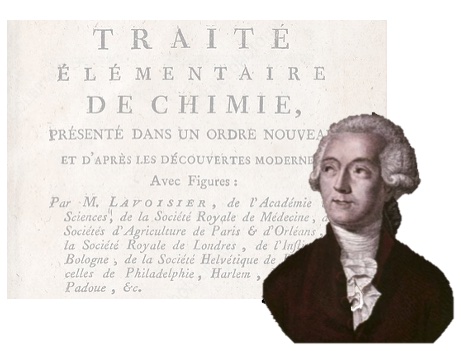Lavoisier’s Traité élémentaire de chimie: At the Intersection of Chemistry and French

Published 2024-03-04
Keywords
- Chemical Education,
- Eighteenth Century Studies,
- Pedagogical Tools,
- Interdisciplinary Chemistry-French Studies
How to Cite
Copyright (c) 2023 Thomas Brown

This work is licensed under a Creative Commons Attribution 4.0 International License.
Abstract
Communication through language is crucial to properly disseminate knowledge and new discoveries in all disciplines. Traité élémentaire de chimie by Antoine Lavoisier is regarded as the first modern Chemistry textbook and can be utilized as a teaching tool for interdisciplinary studies within the fields of Chemistry and French. A contemporary rereading of Lavoisier’s text offers insight into the Chemistry being performed in the Eighteenth century which was recorded and shared using Eighteenth century French language. A reexamination of this historical text provides a variety of pedagogical exercises that can be used across the two disciplines. From chemical principles to unit conversions to shifts in French orthography, Traité élémentaire de chimie possesses a wealth of knowledge that can be enjoyed by a wide audience within the humanities and natural sciences. Lavoisier’s Traité élémentaire de chimie can be employed in several different courses providing chemical principles for science courses while serving as a historical French writing sample for advanced French composition courses.
References
- American Chemical Society International Historic Chemical Landmarks, Antoine-Laurent Lavoisier: The Chemical Revolution, <http://www.acs.org/content/acs/en/education/whatischemistry/landmarks/lavoisier.html> [accessed February 10, 2023].
- Frederick L. Holmes, “Antoine Lavoisier & the Conservation of Matter”, Chem. Eng. News, 72 (1994), 38–45.
- Antoine L. Lavoisier, Traité élémentaire de chimie, tomes 1 & 2 (Paris, France: Cuchet, 1789), < https://www.gutenberg.org/cache/epub/52489/pg52489-images.html> [accessed February 10, 2023].
- Bernadette Bensaude-Vincent, A View of the Chemical Revolution Through Contemporary Textbooks: Lavoisier, Fourcroy and Chaptal, BJHS, 23 (1990), 435–460.
- Bernadette Bensaude-Vincent, “A Founder Myth in the History of Sciences? The Lavoisier Case” In Functions and Uses of Disciplinary Histories; Loren Graham; Wolf Lepenies; Peter Weingart (Dordrecht, Netherlands: Reidel Publishing Company, 1983), pp. 53–78.
- Marlene Rayner-Canham and Geoffrey Rayner-Canham, Women in Chemistry: Their Changing Roles from Alchemical Times to the Mid-Twentieth Century, (Philadelphia, PA: Chemical Heritage Foundation, 1998), pp. 17–22.
- Nivaldo J. Tro, Chemistry: Structure and Properties, 2nd Edition (Hoboken, NJ: Pearson, 2018), pp. 39–45.
- Theodore E. Brown, H. Eugene LeMay, Bruce E. Bursten, Catherine Murphy, Patrick Woodward, Mathew E. Stolzfus, Chemistry: The Central Science, 14th Edition (New York, NY: Pearson, 2017), pp. 44–45
- Jacques Frédéric Saigey, Traité de métrologie ancienne et modern: suivi d’un précis de chronologie et des signes numériques (Paris, France: Librairie Classique et Élémentaire de L. Hachette, 1834), pp. 114–117 <https://books.google.com/books?id=jRoGAAAAQAAJ&hl=en> [accessed January 30, 2023].
- Antoine L. Lavoisier, Traité élémentaire de chimie, tomes 1 & 2 trans. by Robert Kerr (Edinburgh: William Creech, 1790), < https://www.gutenberg.org/files/30775/30775-h/30775-h.htm> [accessed February 10, 2023].
- Roger Hawkins, Richard Towell, French Grammar and Usage 2nd Edition (New York, NY: McGraw-Hill, 2001), p. 224.
- Maurice Grevisse, André Goosse, Le bon usage 16e édition (Louvain-la-Neuve, Belgium: Deboeck Supérieur, 2016), pp. 1188–1189
- Michael D. Oates, Jacques F. Dubois, Personnages: An Intermediate Course in French Language and Francophone Culture 3rd Edition (Boston, MA: Houghton Mifflin Company, 2003), pp. 61–65.
- L’Académie Françoise, Dictionnaire de l’Académie Françoise, Cinquième Édition (Paris, France: Chez J. J. Smits Imprimerie et Librairie, 1798), <https://gallica.bnf.fr/ark:/12148/bpt6k50405t/f1.item.texteImage> [accessed February 15, 2023].
- L’Académie Française, Dictionnaire de l’Académie Française, Sixième Édition (Paris, France: Imprimerie et Librairie de Firmin Didot Frères, 1835), < https://gallica.bnf.fr/ark:/12148/bpt6k50407h/f2.item.texteImage> [accessed February 15, 2023].
- Isabelle Grégor, Histoire du français, (Paris, France: herodote.net, 2016), pp. 34–35.
- See reference 9, pp. 69–70.
- L’Académie Française, L’histoire, < https://www.academie-francaise.fr/linstitution/lhistoire> [accessed February 15, 2023].




